National Folk Museum of Korea
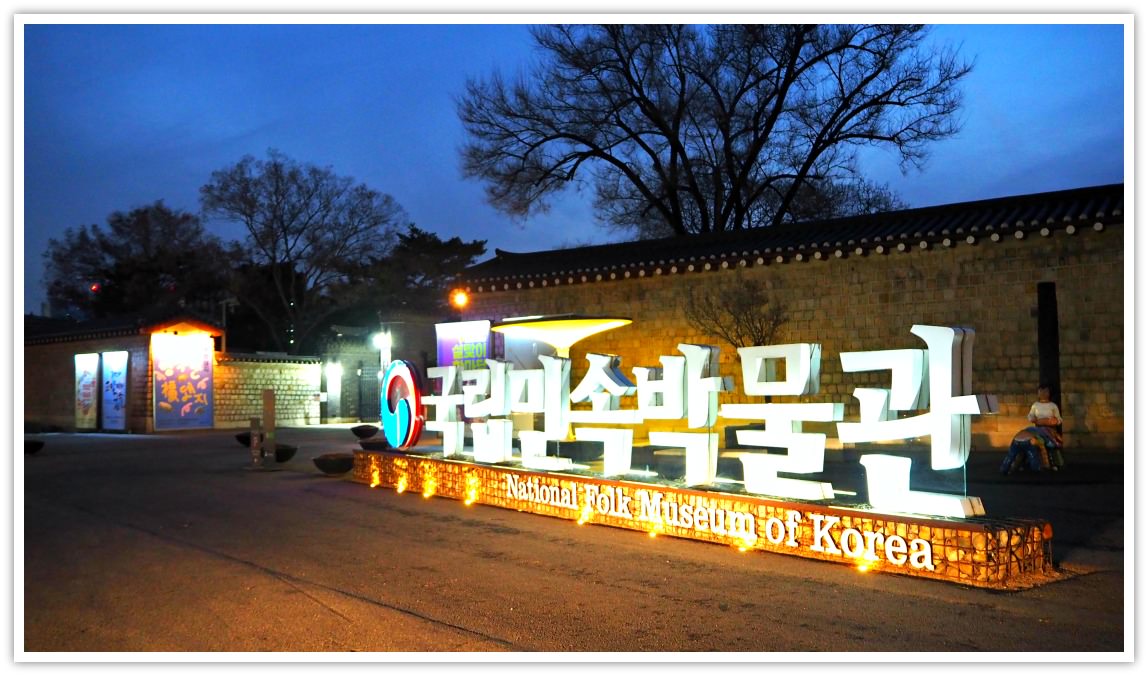 Entrance area to the National Folk Museum of Korea and Gyeongbokgung Palace
Entrance area to the National Folk Museum of Korea and Gyeongbokgung Palacethe national folk museum of korea
The National Folk Museum of Korea is a great place to start learning about Korea’s traditional way of life. Its interesting exhibitions will help you see how they developed and became the best country today.
This museum is famous and highly recommended for a visit in groups, including families with small children.
I have visited this place many times with friends. During this visit, I came alone, and it never bores me to check it again and again: because there are always new displays!
Aside from the traditional culture of Korea, you can also find exhibitions of various folklores around the world. More, there is an exhibition hall dedicated to artifacts being collected as donations.
Aside from the exhibits inside the building, I really love the new displays outside and in front of the building (see the photos below).
Briefly, here is the guide map:
- Permanent Exhibition 1: Traditional Daily Life
- Permanent Exhibition 2: Korean Way of Life
- Permanent Exhibition 3: Korea Life Passages
- Gallery for Donated Artifacts
- Special Exhibition Gallery
- Children’s Museum
- Open Air Exhibition
Architectural Design
I was wondering why the museum’s external architecture looks unconnected. It seems as if it is a product of eclecticism (parts being put together).
And, YES, it is something like that! Here is why…
- Steps (stairs) at the center: designs after Cheongungyo Bridge and Baegunggyo Bridge of Bulguksa Temple
- The tall structure at the center: Palsangjeon Hall of Beopjusa Temple
- The tall structure at the right side: Mireukjeon Hall of Geumsansa Temple
- The tall structure at the left side: Gakhwangjeon Hall of Hwaeomsa Temple
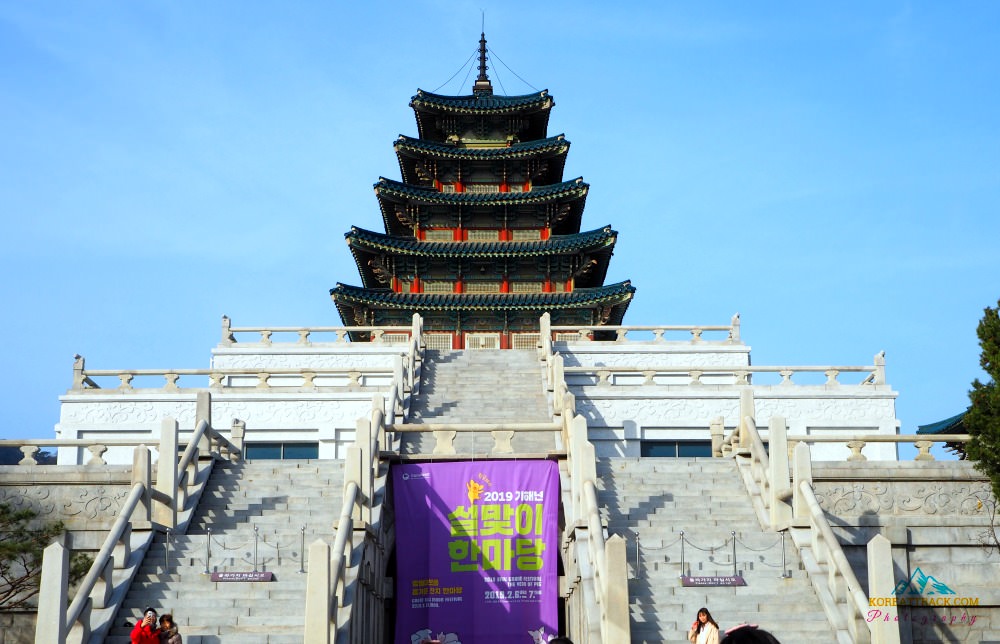 The stairway is a replica of Cheongungyo Bridge and Baegunggyo Bridge of Bulguksa Temple. Central Temple: Palsangjeon Hall of Beopjusa Temple (2/7/2019)
The stairway is a replica of Cheongungyo Bridge and Baegunggyo Bridge of Bulguksa Temple. Central Temple: Palsangjeon Hall of Beopjusa Temple (2/7/2019)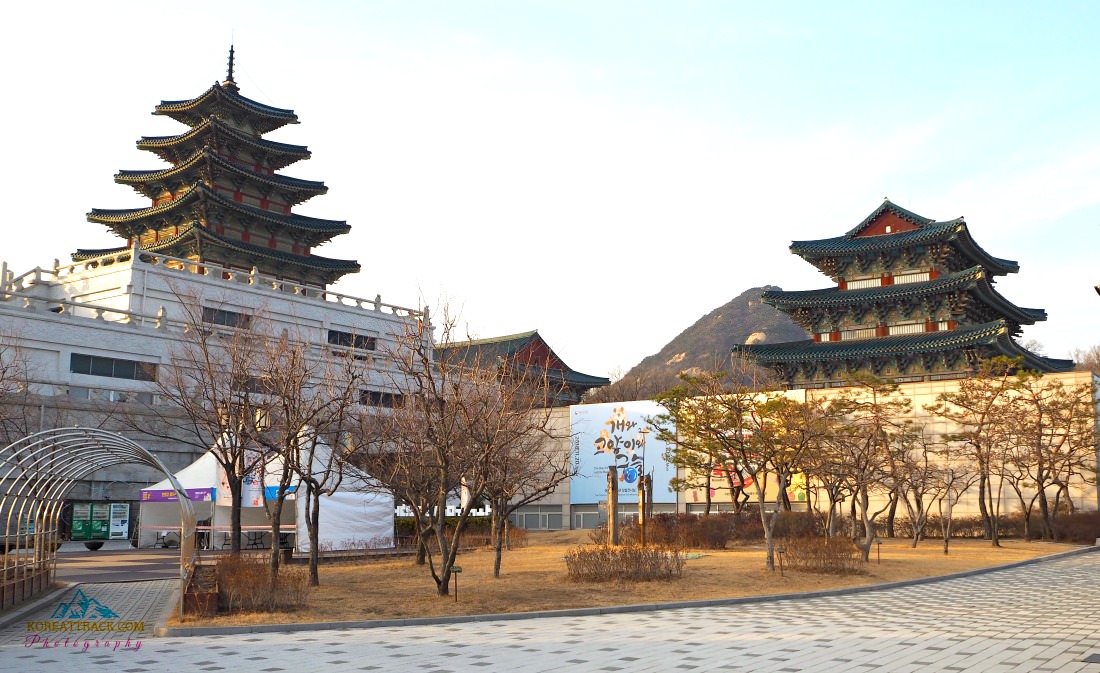 Three halls of the three temples - replicas of the originals mentioned above. Right Temple: Mireukjeon Hall of Geumsansa Temple
Three halls of the three temples - replicas of the originals mentioned above. Right Temple: Mireukjeon Hall of Geumsansa Temple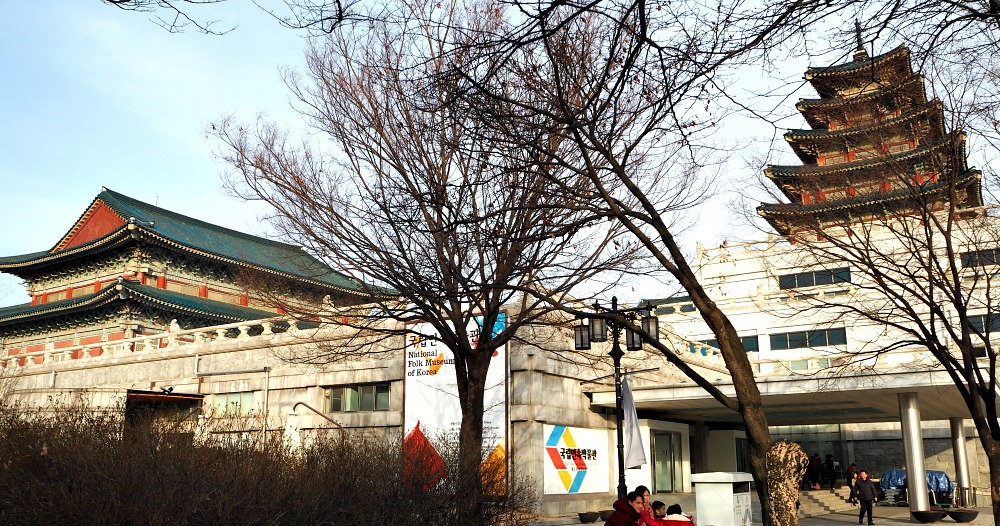 Left Temple: Gakhwangjeon Hall of Hwaeomsa Temple
Left Temple: Gakhwangjeon Hall of Hwaeomsa TempleThis design was the prize-winning work by the National Museum Design
Competition held in 1966. The building is being used with this name and
function since 1993 up to now.
Now we know!
Brief Historical Background
I gathered the following information from the brochure at the Information Desk of National Folk Museum of Korea.
1946: Opening of National Korean Museum
1966: Opening of Korean Folk Hall (Sugjeongjueon Hall at Gyeongbokgung Palace)
1975: Changed of name from National Modern Museum of Art to Korean Folk Museum of Korea
1979: Changed to National Folk Museum of Korea and under the National Museum of Korea
1992: NFMK became independent and now under the Ministry of Culture
1993: Moved from Gyeongbokgung Palace to this current building
Having gotten some historical background, let's check out the exhibition halls available for public viewing...
Museum Exhibition Halls
Permanent Exhibition 1: Traditional Daily Life
The exhibitions present the daily chores and the environment of Korean people, such as eating habits, clothing, and day-to-day living.
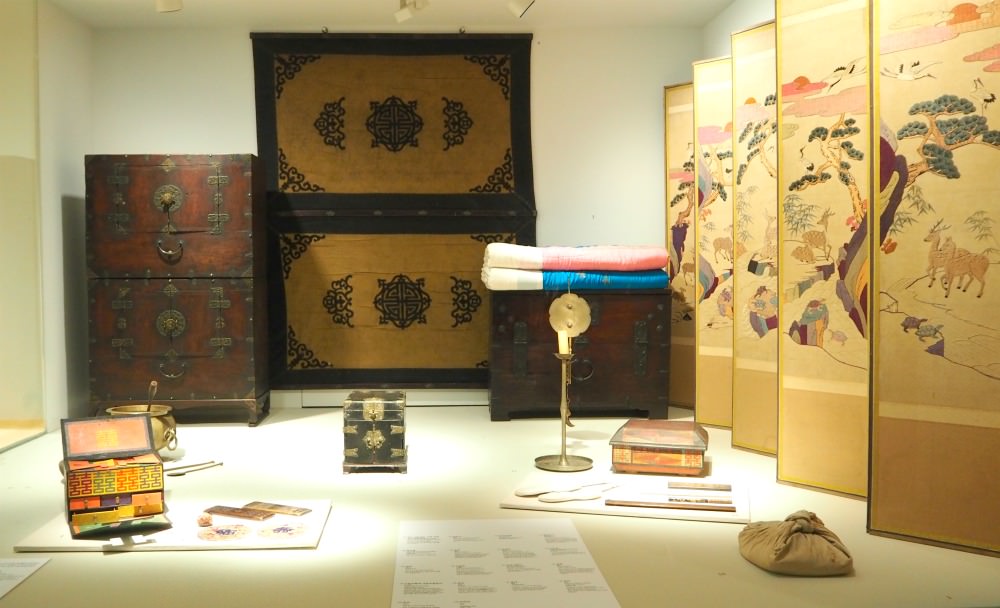 Traditional house items
Traditional house itemsPermanent Exhibition 2: Korean Way of Life
The exhibitions here show how the Korean people lived through farming, market place culture and interactions between sellers and buyers.
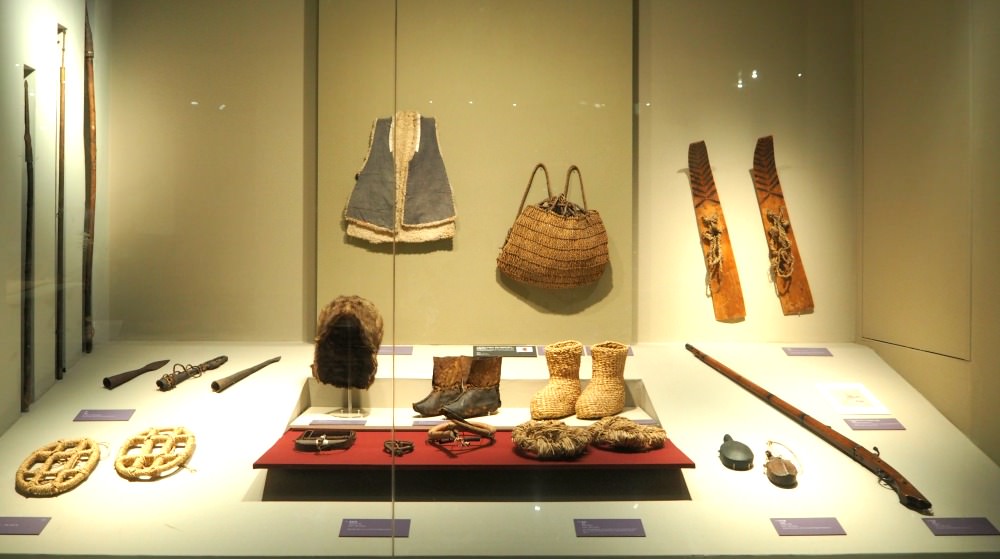 Hunting clothes, weapons, and tools
Hunting clothes, weapons, and tools Traditional musical instruments: gayageum & flutes
Traditional musical instruments: gayageum & flutesPermanent Exhibition 3: Korea Life Passages
This exhibition presents the old Confucian culture of filial piety in the Joseon Dynasty (1392-1910). You can see Koreans’ life: from birth to growing up with the Confucian thinking.
 Carriage for the bridge
Carriage for the bridge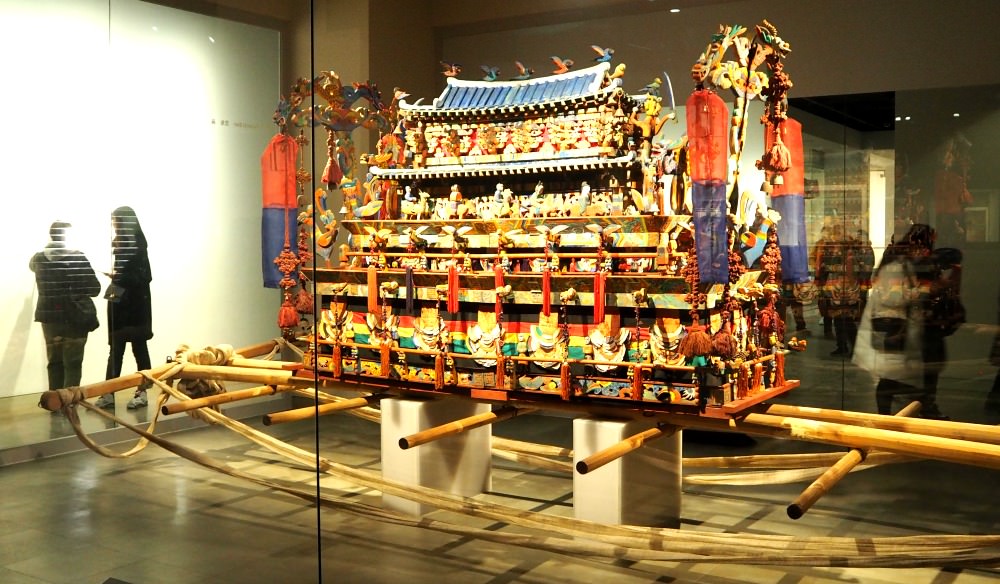 Carriage used to transport the dead
Carriage used to transport the deadGallery for Donated Artifacts
Obviously, this gallery houses items being donated by individuals. The collections listed donors since 1964.
Special Exhibition Gallery
This gallery presents aspects of Korean culture in different viewpoints to elaborate Korean folk traditions.
Children’s Museum
Bring your children here to explore some collections that are educational and attraction to them. There is also an area where they can freely play around.
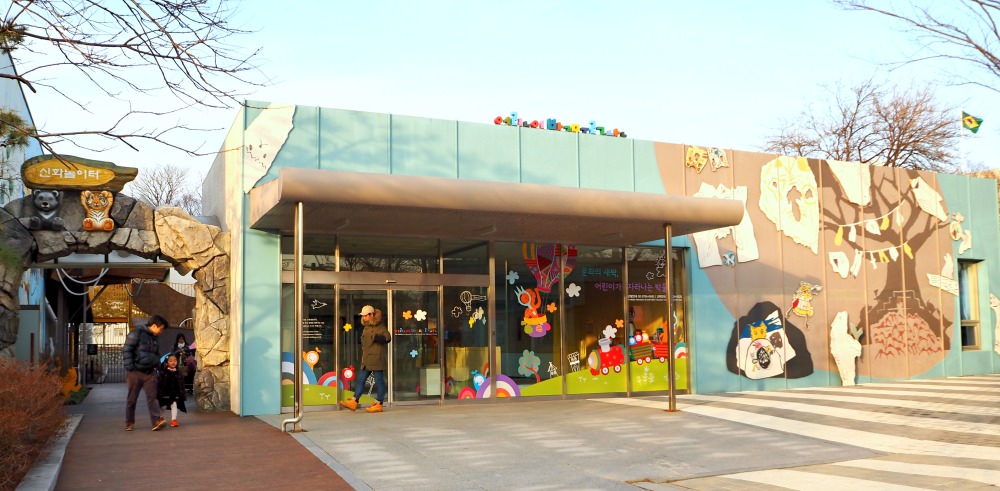 Children's museum and playground
Children's museum and playground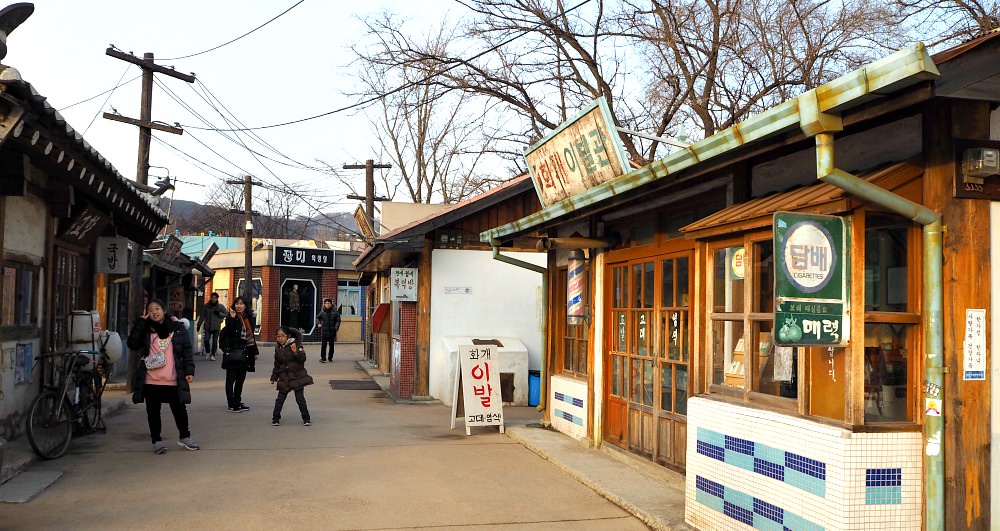 Shops in the 1980s in South Korea
Shops in the 1980s in South Koreaopen air exhibition
Open Air Exhibition
This is outside and just in front (mostly) of the National Folk Museum of Korea. You can lightly stroll around and examine structures and stone sculptures some of which originals while some are replicas.
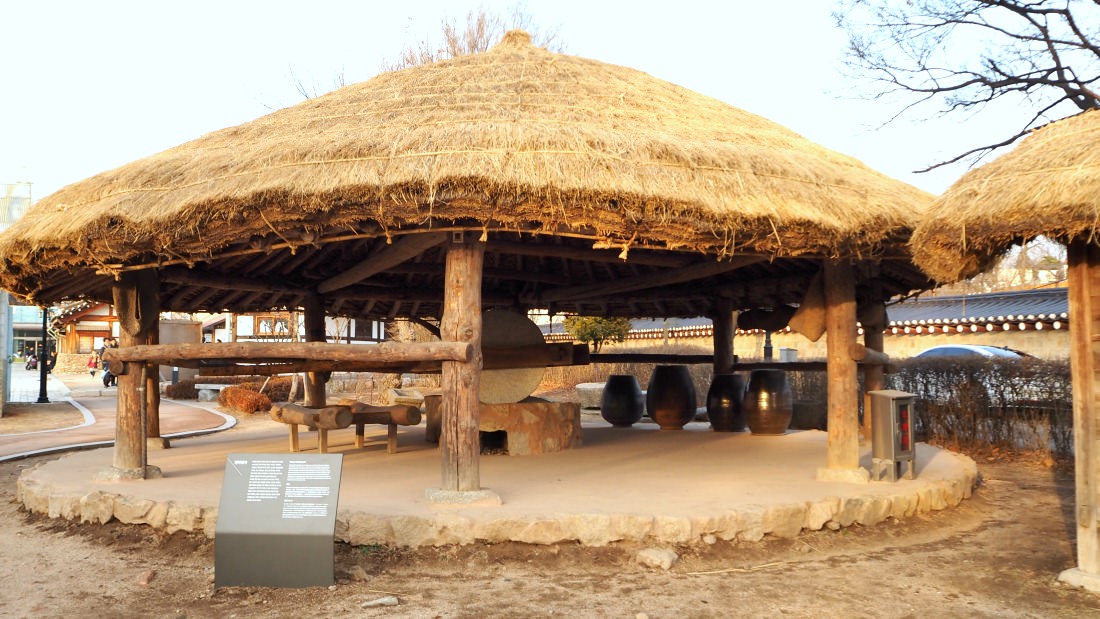 Stone grains grinder facility
Stone grains grinder facility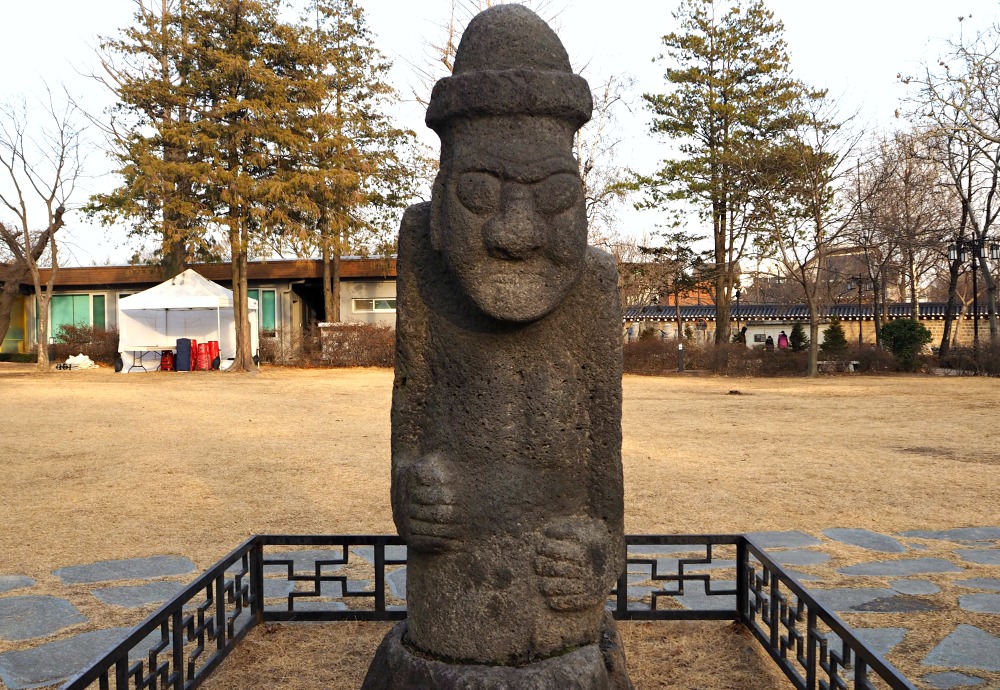 Harubang - a stone statue commonly used in Jeju Island to symbolize fertility.
Harubang - a stone statue commonly used in Jeju Island to symbolize fertility.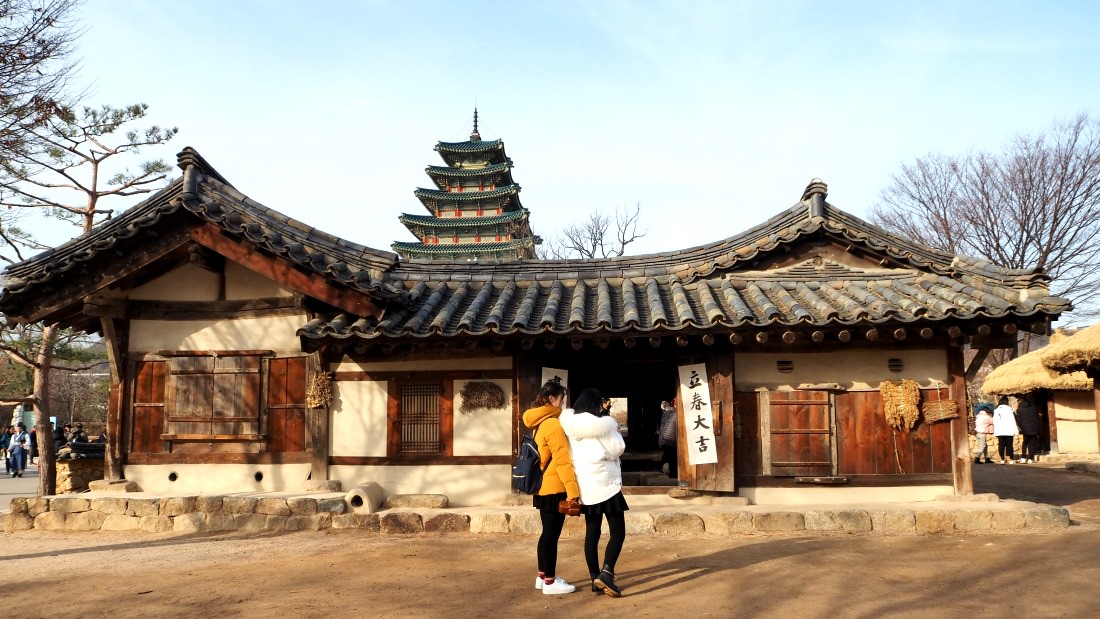 Traditional Korean house where ordinary folks live
Traditional Korean house where ordinary folks live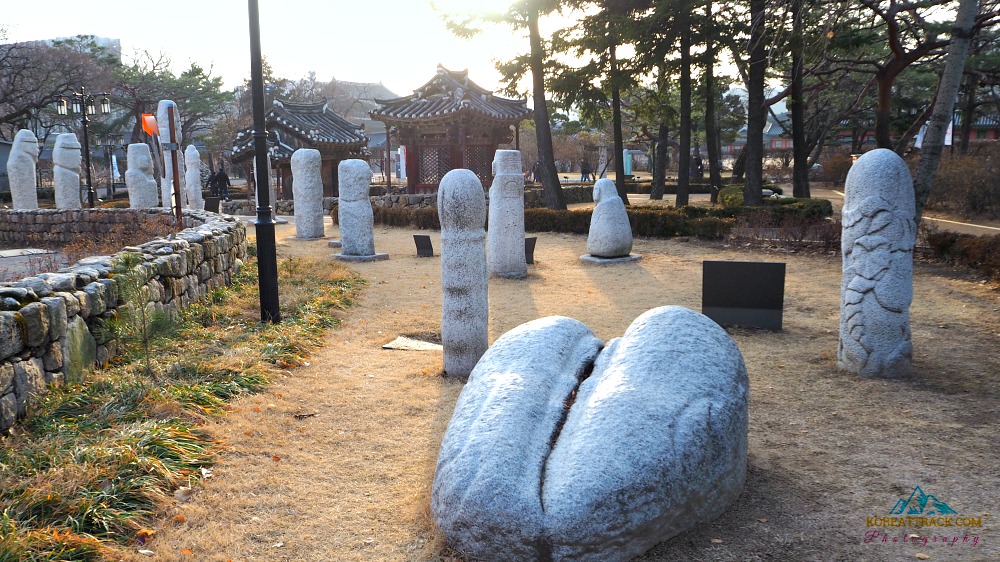 Stone statues and phallic symbols to symbolize fertility and great harvest in the old traditional Korean beliefs
Stone statues and phallic symbols to symbolize fertility and great harvest in the old traditional Korean beliefsuseful further information
The following useful details should help you prepare your visit to the museum. Basically, visiting the National Folk Museum of Korea is quite easy, and there’s no need for much preparation.
You can make use of the facilities they offer for ease and comfort. The entrance to the museum is free once you paid for your entrance to Gyeongbokgung Palace.
Another way to get free entrance to the palace (and to the museum) is by renting a ‘hanbok’ (traditional Korean clothing available for both men and women—even for children).
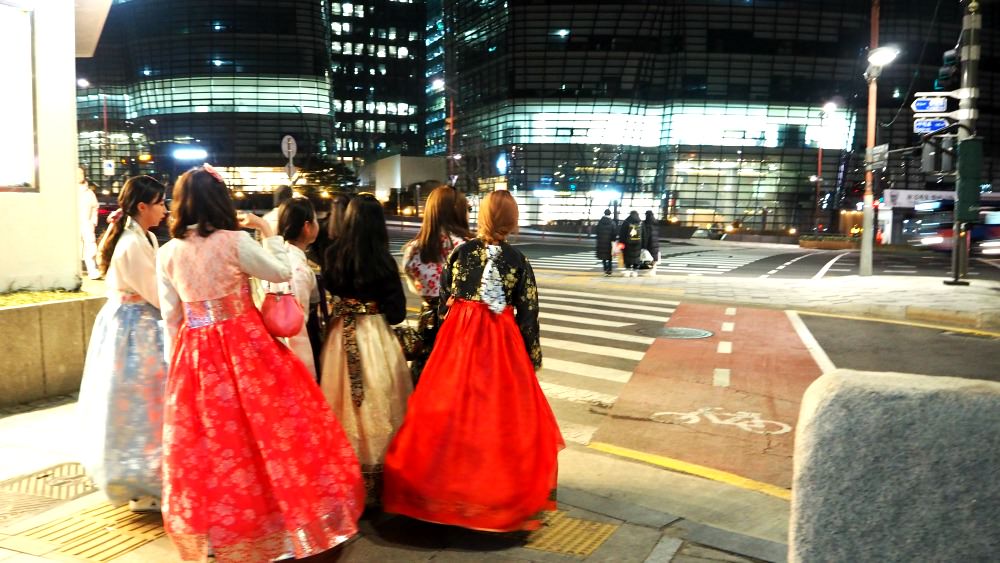 Women wearing the traditional Korean dress called 'hanbok' during Sollal (Lunar New Year)
Women wearing the traditional Korean dress called 'hanbok' during Sollal (Lunar New Year)Rentals of hanbok are available in many shops around the palace area.
Business Time:
- March~October: 9-6:00 PM
- November~February: 9-5:00 PM
- Weekends & Public Holidays: 9-7:00 PM
- Last Wednesday, Friday, Saturdays of the month: 9~9:00 PM
Guided Tours & Reservation:
- Call to reserve 3 days before the tour
- From 10 to 30 people per group
- Phone: 02-3704-3129; 9~6:00 PM (Mon~Fri)
Facilities:
- Information Desk, Museum Lounge, Lobby
- Auditorium, Museum Shop
- Audio Player Rental (1,000KRW), Video Channel Studio
- Washrooms, Lockers, Nursing Room
- Wheelchair & Baby Stroller (available from the Information Desk & requires ID)
- Outside Benches
Performances Schedules:
- Saturdays: 3 PM, Main Auditorium
- Fridays: Folk Live Stage, 4 PM, Front Yard
- April~June & September~October
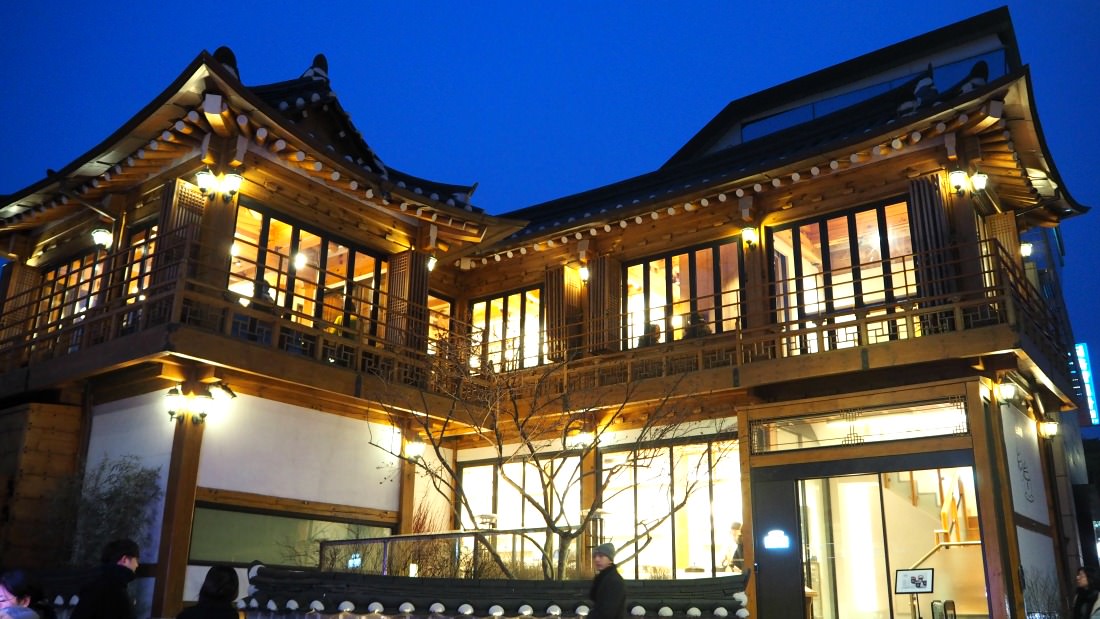 Hanok (traditional house) style cafe
Hanok (traditional house) style cafeGetting to National Folk Museum of Korea
If you are in Seoul area, you can walk your way to the National Folk Museum of Korea as it is straightforward to find. You won’t miss it!
However, if you so prefer to take the public transport, here are your choices…
Subway:
Gyeongbokgung Station, Exit #5
Anguk Station (Line 3), Exit #1
Gwanghwamun Station (Line 5), Exit #2
Bus
Take any bus that goes to Sejong-ro or Gwanghwamun Square. Then walk towards Gyeongbokgung Palace.
Inside the palace, you can purchase your entrance ticket and find a map (if you want one).
Town Bus (Maeul Bus)
Take Bus No.11 then get off at Jeongdok Public Library where the National Folk Museum of Korea is located.
Car Parking Area
If you are driving when visiting the museum, you can use the Gyeongbokgung Palace’s parking area for a fee.
The parking area is open from 8 AM to 7 PM.
Website: www.nfm.go.kr (Korean, English, Japanese, Chinese, French, Spanish, German)
Address/Location: 03045, 37 Samcheong-ro, Jongno-gu, Seoul.
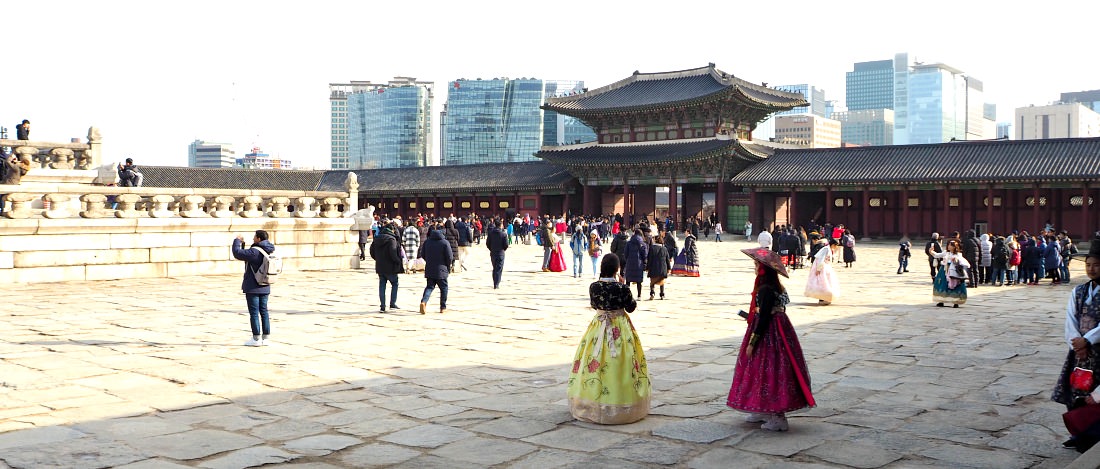 Gyeongbokgung Palace during the Lunar New Year or Sollal
Gyeongbokgung Palace during the Lunar New Year or SollalOther Palaces, Museums, and Sites Nearby
- Changdeokgung Palace
- Changgyeonggung Palace
- Unhyeongung Palace
- Deoksugung Palace
- Gyeonghuigung Palace
- Jongmyo Royals Shrine
- National Palace Museum of Korea
- National Museum of Korea
- National Hangeul Museum
- National Museum of Modern and Contemporary Art
- National Museum of Korean Contemporary History
- Seoul History of Art Museum
Thanks for checking this article and I hope this is useful. Please, let me know should you have particular questions about this attraction.
- Home
- Museums & Galleries
- National Folk Museum of Korea
Get Exciting Activities
Book one of our exciting activities today to experience the thrill of a lifetime! Take advantage of this opportunity and secure your spot in advance.
Hotel Map Guide
Find your affordable, accessible, and comfortable hotel in Seoul at Agoda.Com. See the hotel map below...
Hotel Booking Guide
Find affordable and amazing hotels on Agoda.com using the search box below. Book now to enjoy great discounts and save!
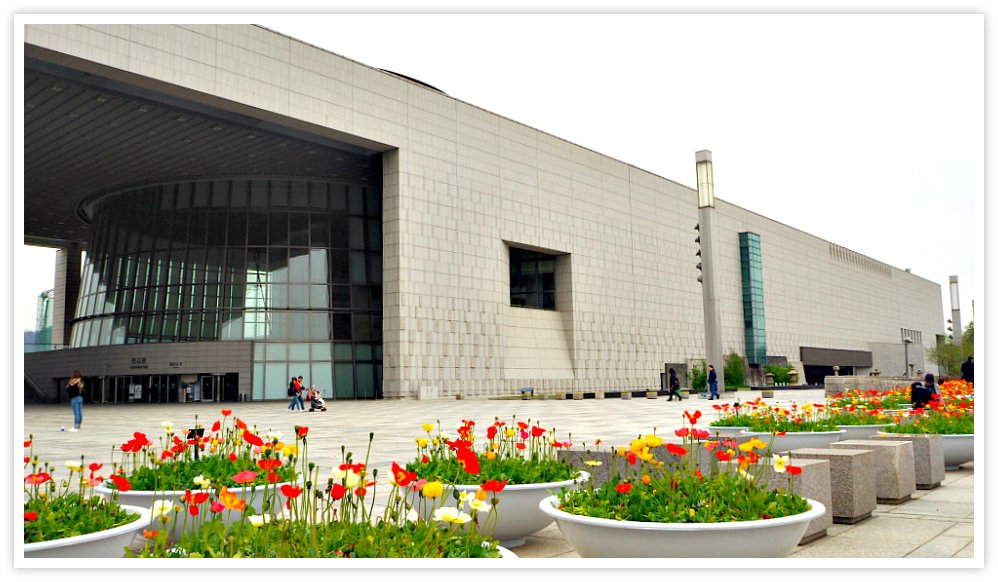
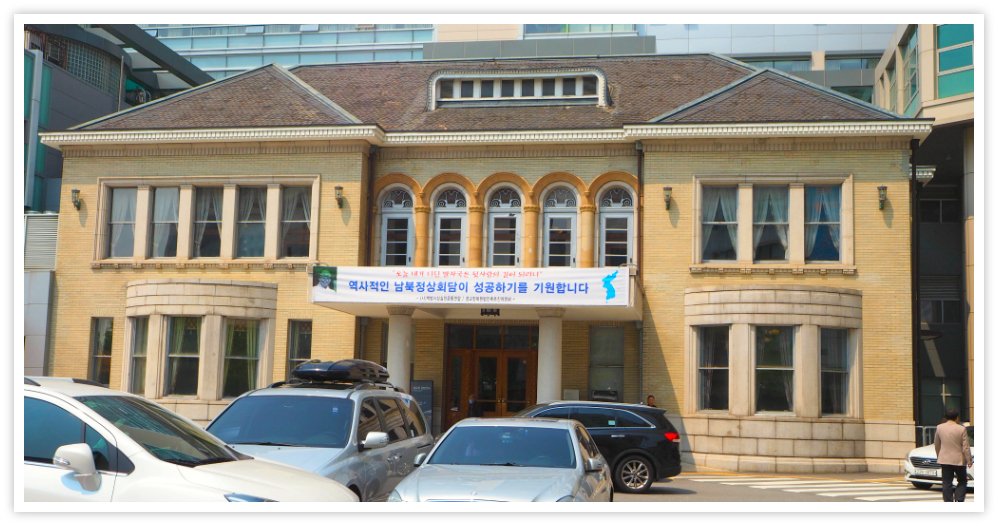
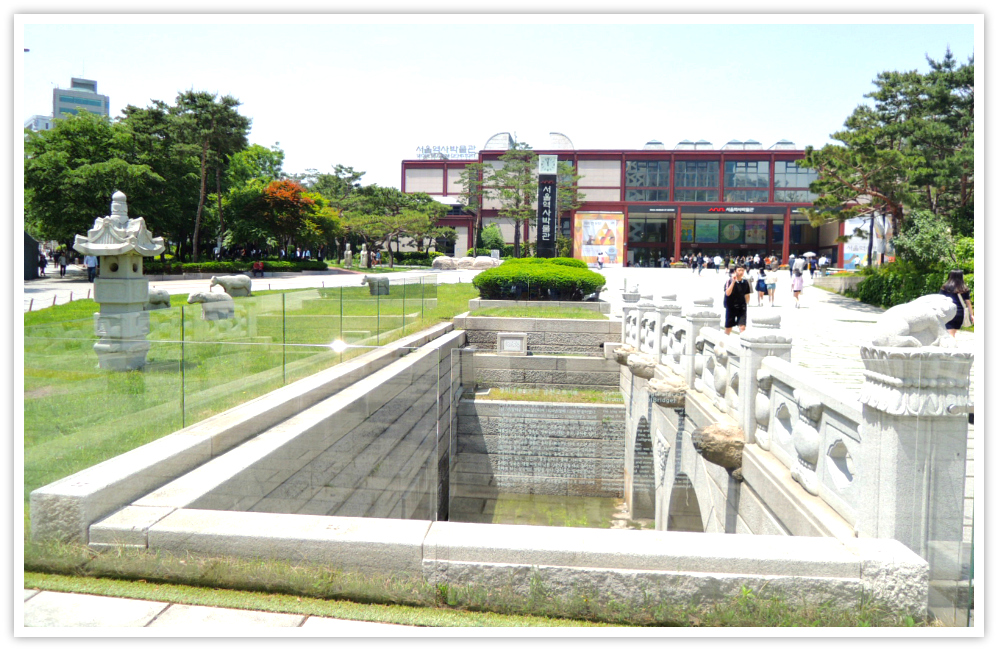




New! Comments
What do you think about this page? Leave me a comment in the box below.